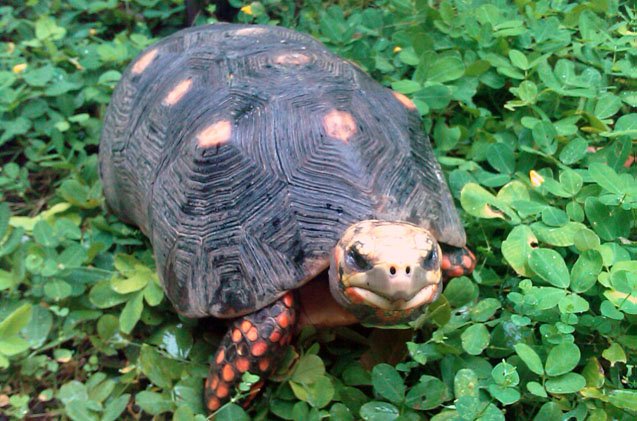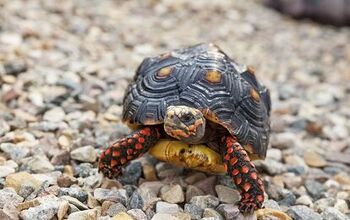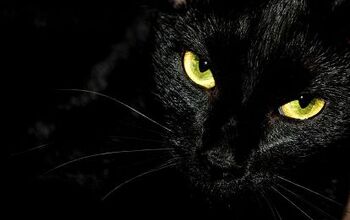Cherry Head Red Foot Tortoise


About Cherry Head Red Foot Tortoise
The Cherry Head Red Foot Tortoise is slightly smaller than the Red Footed Tortoise, and it is a hardy species. This is one of the most beautiful and impressive of all the tortoise breeds, and these pets are highly sought after as a result.
These tortoises are intelligent, with a good memory and the ability to learn quickly, particularly when it comes to discovering when and where they will be fed, as well as where they can bask and where they can find shelter. They are also known for their strong sense of smell, though they are also highly sensitive to touch, as even a slight touch of their shell will be felt.
Once you get to handle and really get to know a Cherry Head Red Foot Tortoise, it will become incredibly clear why this is one of the most popular breeds in the world.
The Cherry Head Red Foot Tortoise is one of the most beautiful and impressive of all the tortoise breeds.
Cherry Head Red Foot Tortoises live in exotic jungles that are found in Central America, South America, and the Caribbean. They are primarily found within limited areas of Brazilian rainforests and the Paraguayan Chaco. They are also found in Trinidad, Barbados, and Panama, and they can survive in various habitats that include dry and wet forests, grasslands, and savannas.
Hatchlings will be about 1½” to 2” in length, and their rate of growth will be dependent upon several factors, including the quality and amount of food that’s provided, as well as the temperatures of the environment.
As adults, these tortoises will typically be anywhere from 10-14” long, though some will be smaller or larger. Over the first 5-10 years, these tortoises will grow quickly, but their rate of growth will begin to slow with age.
Cherry Head Red Foot Tortoises are intelligent, with a good memory and the ability to learn quickly.
Considered one of the most attractive tortoise breeds, the Cherry Head Red Foot Tortoise has a distinct appearance. This tortoise will have leg scales and a head that features an orange or bright red color. Also, some of these tortoises are born with a darker shell, while others are lighter. However, all of them will grow up to feature the orange or red legs and the orange or red head.
You should provide your Cherry Head Red Foot Tortoise with shallow water that is warm enough so that he can soak in it, along with clean, filtered, fresh water that he can drink. Always provide the soaking water in a dish that is big enough for the tortoise. Clean the water dishes regularly, especially after your pet has soaked. And he should also have a basking spot that is warm and comfortable.
The enclosure for this tortoise breed should have a wall that is at least 16” high above the ground, and it should be sturdy. This wall should also be fixed a few inches below the ground in order to prevent your tortoise from digging. See-through walls and fences are not recommended for this breed, as your tortoise may attempt escaping if he can see through to the other side of the enclosure.
Whenever the temperature is acceptable, you can allow your tortoise to spend time outside, but you can also raise your tortoise indoors for its first few years of his life. If you are going to be creating an indoor enclosure, stick with a basic plastic sweater box or what is known as a tortoise table, which can be constructed or purchased. Place your lighting, substrate, and other accessories inside this enclosure.
You can use a variety of substrates for your indoor tortoise enclosure, but cypress mulch is an effective option because it is safe and absorbent. You can also use peat moss or coconut coir. For an outdoor enclosure, you can provide natural soil (make sure it does not have any fertilizers or chemicals). Provide flat, large rocks that can serve as a surface for your tortoise’s food. These rocks can also help to file his nails down.
When indoors, room temperature should be between 68-80°F, and there should be a basking area heated to 90°F. You can provide your tortoise with a UVB light bulb placed overhead, and you can run this light for 12 hours each day.
You can house a Cherry Head Red Foot Tortoise in a community setting.
The Cherry Head Red Foot Tortoise enjoys eating a variety of foods. These include mixed vegetables, carrots, cactus, clover hay, grasses, and leafy greens that do not include spinach. You can also provide your tortoise with red fruits that are sweet, and you can provide supplements that are low in phosphorus and high in calcium.
These tortoises will not hibernate; however, they will slow down during shorter days and cooler temperatures in the winter.
You can house a Cherry Head Red Foot Tortoise in a community setting. Hatchlings will be able to do well with other tortoises, too, provided that you give them a bit of extra care.
It is not recommended that you handle your tortoise too much, as doing so could stress your pet. Children, in particular, could accidentally drop the tortoise and cause harm. Older tortoises and juveniles will typically be even more resistant to any handling.
Whenever you do handle your pet, do so with care. Never restrict these animals or pin them down. Let them behave as they want, particularly while young. As they get older, they will become more tolerant of people.
Photo credit: Flints/Wikimedia; Micha Klootwijk/Bigstock; Dick Culbert/Wikimedia

Lisa Selvaggio is a freelance writer and editor, and our resident cats-pert, with certifications in pet nutrition and pet first aid. She enjoys producing content that helps people understand animals better so they can give their pets a safe and happy home.
More by Lisa Selvaggio

























